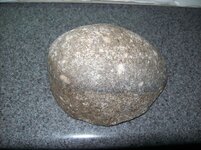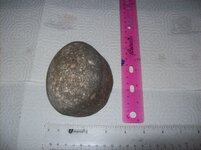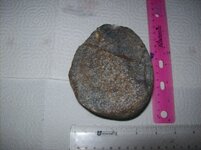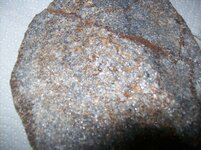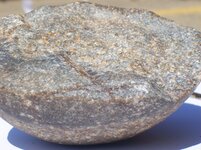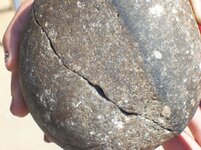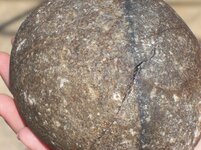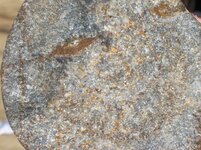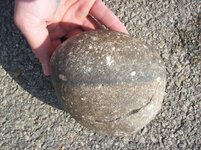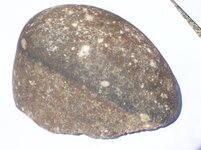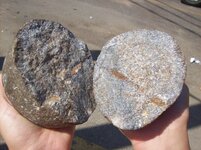jr.nation88
Jr. Member
- Jan 14, 2012
- 27
- 4
- Primary Interest:
- Other
One of my students brought in an interesting stone today hoping I could help her identify it. We are currently learning about geology and sometimes they believe I know it all...I told her I was not for sure but would know where to turn for help. Can you give me any leads? I've also posted this in the Native American forums because I've come across some posts about gaming balls and the such. At first I was thinking it was in the Geode family and was doing a little research and the closest thing I could find was possibly a geode nodule but not sure. Thanks in advance for the help, Nick.
This is only one half, she has the other half and is going to bring it in next week to class. The outside is extremely smooth except for some small bits. Seems a bit too smooth to be purely by erosion. This one half is also pretty heavy feeling for its side. The inside has no hollow spots but does contain some mineral deposits. Quite a few crystals of quartz and what appears to be hematite/iron because it has turned rusty brown.
This is only one half, she has the other half and is going to bring it in next week to class. The outside is extremely smooth except for some small bits. Seems a bit too smooth to be purely by erosion. This one half is also pretty heavy feeling for its side. The inside has no hollow spots but does contain some mineral deposits. Quite a few crystals of quartz and what appears to be hematite/iron because it has turned rusty brown.


